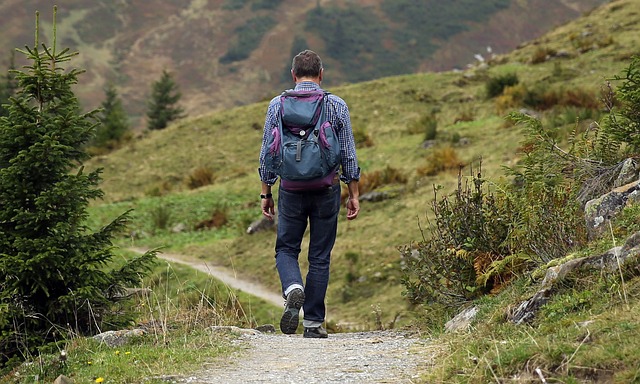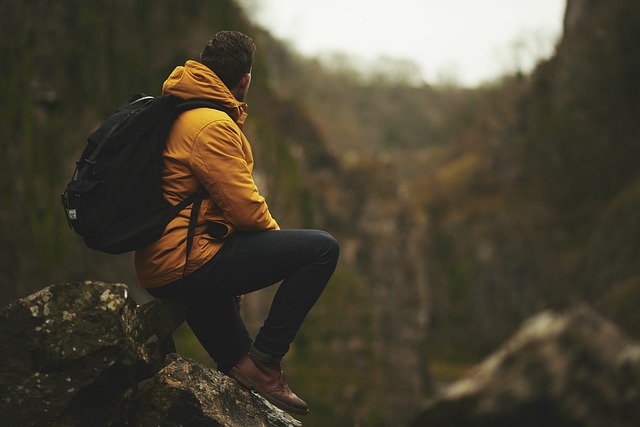Backpacking Hiking
Welcome to the exhilarating world of backpacking hiking! Strap on your boots, hoist your backpack, and get ready to embark on an unforgettable adventure. Backpacking hiking combines the thrill of exploration with the joy of self-reliance as you navigate through breathtaking landscapes, conquer challenging terrains, and connect with nature on a profound level. Whether you’re a seasoned outdoor enthusiast or a novice looking to push your limits, backpacking hiking offers an immersive experience like no other, allowing you to disconnect from the hustle and bustle of daily life and reconnect with the raw beauty of the great outdoors. So, grab your gear, embrace the unknown, and prepare to be captivated by the wonders that await you on the trails.

Backpacking hiking preparations
Preparing for backpacking hiking is crucial to ensure a safe and enjoyable experience. Here are some important steps to consider:
-
Plan and research: Start by selecting a hiking destination that suits your skill level and interests. Research the trail conditions, weather patterns, and any permits or regulations that may apply. Plan your route, including the distance, elevation gain, and camping options along the way.
-
Fitness and conditioning: Backpacking hiking can be physically demanding, so it’s essential to be in good physical shape. Incorporate regular cardio and strength training exercises into your routine to build endurance and strengthen your muscles, especially those in your legs, core, and back.
-
Gear and equipment: Invest in quality backpacking gear, including a reliable backpack, tent, sleeping bag, and appropriate clothing layers. Don’t forget essential items such as a map, compass, headlamp, first aid kit, water filter, and sufficient food and water supplies. Test and familiarize yourself with your equipment before hitting the trail.
-
Pack light and smart: Prioritize lightweight and compact gear to minimize the weight on your back. Pack essentials like clothing, food, and shelter, and avoid unnecessary items. Consider the climate and terrain to determine the appropriate gear and clothing for the trip. Distribute weight evenly in your backpack to maintain balance and stability.
-
Learn outdoor skills: Acquire basic outdoor skills such as navigation, fire-building, water purification, and wilderness first aid. Knowing how to read a map, use a compass, start a campfire safely, and treat common injuries can greatly enhance your safety and self-reliance on the trail.
Remember to leave no trace, respect wildlife and nature, and inform someone about your hiking plans. Proper preparation, physical fitness, and knowledge of outdoor skills are vital to ensure a successful and enjoyable backpacking hiking experience.
If backpack hiking is not your type, why not check what else you can do in the wild? Have a look at our types of hiking page!
What bag should I choose for backpack hiking?
When choosing a backpack for hiking in the forest, there are several factors to consider:
-
Size and capacity: Opt for a backpack with an appropriate size and capacity to accommodate your gear and supplies. A capacity of around 30-50 liters is often suitable for day hikes, while multi-day hikes may require larger capacities.
-
Comfort and fit: Look for a backpack with adjustable shoulder straps, a padded hip belt, and a sternum strap. These features help distribute the weight evenly and provide a comfortable fit, reducing strain on your back and shoulders.
-
Durability: Since hiking in the forest can involve rough terrains and potential encounters with branches and rocks, choose a backpack made from durable materials like nylon or ripstop fabric. Reinforced stitching and sturdy zippers will also enhance the longevity of the pack.
-
Water resistance: Forest environments can be damp, so consider a backpack with water-resistant or waterproof materials to protect your gear from rain or accidental spills. Look for features like rain covers or coated fabrics.
-
Access and organization: Select a backpack with multiple compartments and pockets for easy organization of your gear. Additionally, consider a backpack with front-loading or top-loading access for convenient packing and access to your items on the trail.
-
Ventilation: Forest hikes can be sweaty, so look for a backpack with a breathable back panel or mesh padding. This design allows air circulation and helps prevent excessive perspiration and discomfort.
Remember to try on different backpacks and test their weight distribution before making a final decision. Ultimately, choose a backpack that fits your body well, offers the necessary features when you start exercising hiking, and aligns with your personal preferences.

Frequently Asked Questions for Backpacking Hiking
Q: Should I worry about wildlife when backpack hiking in the wild?
A: When backpacking, it’s important to be aware of wildlife, but there’s usually no need to worry excessively. Educate yourself about the wildlife in the area, store food properly, and maintain a safe distance from animals. By following these precautions and respecting their habitat, you can minimize the chances of negative encounters and enjoy your backpacking experience.
Q: When backpack hiking what should the maximum weight of the bag be?
A: The weight of your backpack when hiking will vary depending on several factors, including the duration of your trip, the climate, and your personal preferences. As a general guideline, aim to keep your backpack weight between 10-20% of your body weight. However, lighter is generally better, as a lighter pack reduces strain on your body and allows for greater mobility on the trail.
Trails
Nature
Forest
Mountain
Coastal
Urban
''The journey of a thousand miles begins with a single step.''

